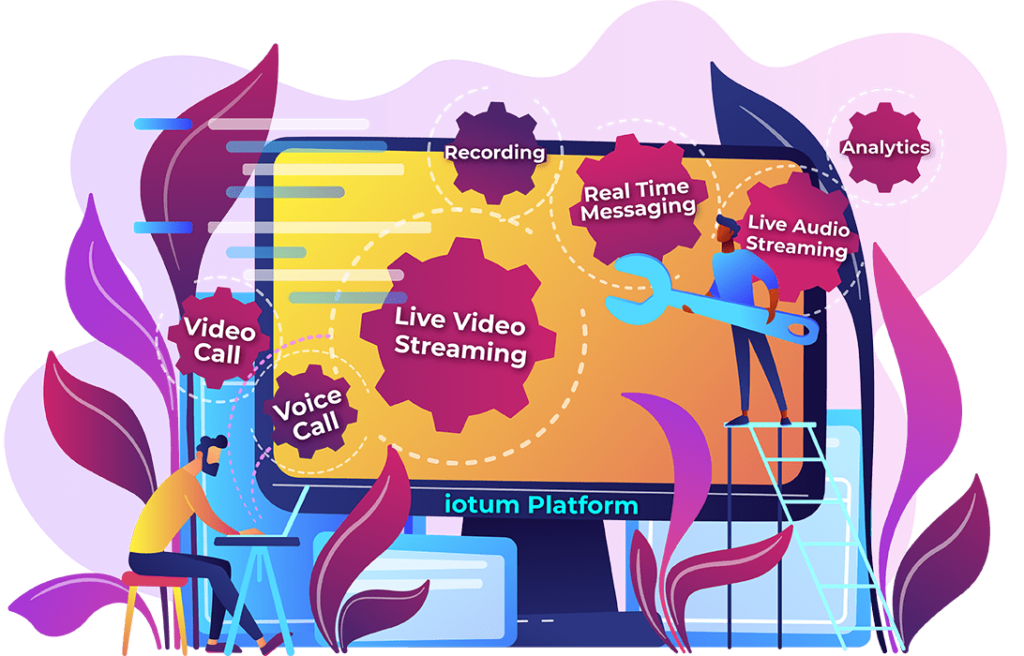 For any eager learner or student, video conferencing technology offers a straightforward and convenient way to study after hours with peers. It doesn’t matter if you’re enrolled at a brick and mortar institution or learning online. The option to meet with classmates in a virtual setting provides so much more possibility to learn, collaborate, and share notes, regardless of physical location.
For any eager learner or student, video conferencing technology offers a straightforward and convenient way to study after hours with peers. It doesn’t matter if you’re enrolled at a brick and mortar institution or learning online. The option to meet with classmates in a virtual setting provides so much more possibility to learn, collaborate, and share notes, regardless of physical location.
Especially amidst a global pandemic where boredom and loneliness are at an all-time high. Even if a study group isn’t something you normally lean on, now is the time to consider how it might actually serve you well!How To Organize A Study Session
Let’s go over why a study group held together via video conferencing and other digital tools works in your favor and why it’s important to know how to organize one.
Why Are Virtual Study Sessions Effective?
 A virtual study session allows for a small group of people to meet in an online space, whether to do group work or to facilitate a shared learning experience reading, solving a problem, studying for an exam, or opening up the discussion based on recent learnings.
A virtual study session allows for a small group of people to meet in an online space, whether to do group work or to facilitate a shared learning experience reading, solving a problem, studying for an exam, or opening up the discussion based on recent learnings.
Most effective when group members want to achieve a good grade, a virtual study session can be facilitated by the teacher or independently organized by the learners. Either way, they lend themselves well to learners who are juggling other commitments like a career or part-time job, or a family. Since there’s no traveling or commuting involved, time is saved and can be used more meaningfully.
In a time of isolation, video conferencing offers learners the avenue to still maintain a sense of community – and a strong one at that! Classmates can still connect and see each other face to face. It can be a tool for motivation, accountability and even if you aren’t actively getting work done together, the virtual session can provide a designated time to get work done.
Video conferencing also comes loaded with features designed to simplify virtual communication. Multiple conversations can happen at once using features like pinning and highlighting key speakers. Plus, there’s text chat for side conversations. These features are helpful in all different kinds of virtual settings, perfect for hosting Q&A sessions, interviewing a mentor 1:1, or hiring a tutor to lead the small group.
(alt-tag: Midground view of young woman on laptop with textbooks studying at desk from home in bright and open loft space.)
How To Set-Up A Productive Study Session
Depending on the kind of interaction you’re looking for, consider the following guidelines for a virtual study session that brings people closer, fosters a learning environment, locks down the course material, and prepares you with the required knowledge:
- Keep The Group Small
Even though a lot of video conferencing software comes with the capacity for thousands of participants, you’ll get the most out of your study group by keeping the numbers low – 3-5 people who all have the same end goal is a good rule of thumb. - Decide On Timing
A one-hour session will likely be rushed and offers little buffer time for late-shows or technical difficulties. A study group that’s too long will be difficult to hold attention. Aim for a 1.5-3 hour session for maximum results. - Research For The Right Platform
Running a virtual study session is a dynamic experience. To get the most out of your time spent together, you’ll need to be able to hear and see each other clearly and concisely. You will need to share files, lead discussions, and use videos and images to support your work. Look for a video conferencing solution that comes with high-quality audio and video, screen sharing, file and document sharing, and an online whiteboard – especially helpful for breaking down complicated formulas or expressing detailed design ideas. - Set An Agenda
Save time and energy by putting in a little forethought to the structure and meaning of the virtual study session. Know what materials need to be discussed, who should be leading what, provide materials that help with the content, etc. - Delegate Responsibilities
Reduce frustration and extra burden when each group member leads a session or the responsibilities are equally split up. Perhaps it’s as simple as breaking up the readings in the textbook and delegating each passage to a peer. Maybe it’s a little more complicated and one person every time is responsible for putting the session’s findings into a presentation deck. Either way, bring it up early and often. - Inject A Bit Of Social Time
At the beginning of the session, have a little fun to ease people in. Check-in with people, ask them to share what happened in their day, or play a quick game of show and tell using a nearby object. Once everyone has shared, then segue into study time.
(alt-tag: Straightforward view of smiling young woman drinking coffee while working on laptop at desk in communal working space.)
A Few More Tips And Tricks
 To ensure you make the most out of your time spent together as a study group and to really get the full video conferencing experience, use the following few suggestions:
To ensure you make the most out of your time spent together as a study group and to really get the full video conferencing experience, use the following few suggestions:
- Triple Check Your Equipment
Camera? Check. Mic? Check. Speakers? Check. Internet connection? Check. Device updates? Check. Make sure you’ve covered the basics, so you can have a painless virtual experience. - Assign A Moderator
Choose someone every time to moderate entry and exit. Moderators are also in control of recording the meeting. This is especially helpful if you need to record a session for someone who couldn’t make it. - Plan Breaks
Discuss when breaks will occur and for how long. A 15-minute break halfway through will help minimize interruptions and will prevent people from eating and drinking while online which can get noisy and distracting. - Have A “Take Away”
Wrap up the end of the session with “next steps,” key points, and a review of what was discussed. This is a great opportunity to address questions or problems regarding a particular topic.
Let FreeConference.com be the go-to video conferencing software for your virtual study group. It’s FREE, fast, and comes with the must-have features you need to learn more deeply and collaborate more effectively. Enjoy Screen Sharing, File and Document Sharing, and Meeting Recording for study sessions that are smooth-running and collaborative.


